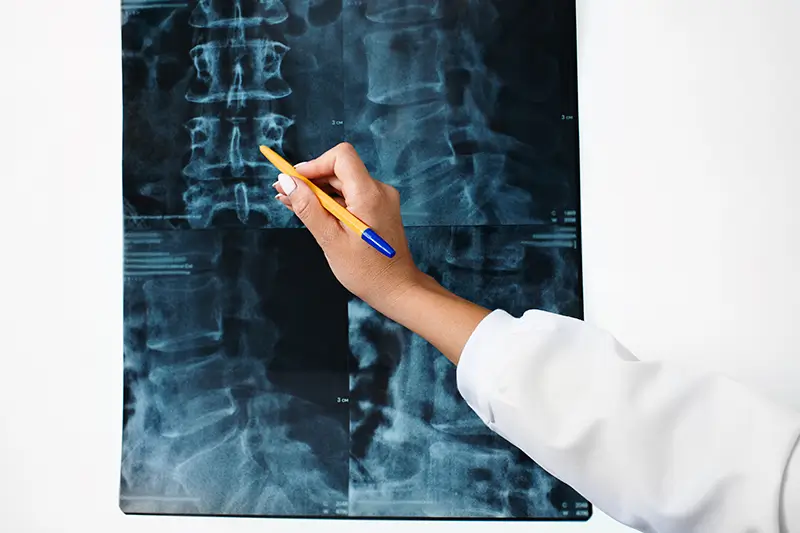As per the American Academy of Orthopedic Surgeons (AAOS), fractures that result from osteoporosis occur most often in the spine. They are almost twice as common as other osteoporosis related fractures that occur in broken hips and wrists. It is estimated that vertebral fractures occur in around 700,000 patients every year. In this way, vertebral fracture cases are quite common in orthopedic practices and they should ensure accurate orthopedic medical coding to ensure due reimbursement, especially when ICD-10 is on board.
In ICD-9, a single code 733.13 was used to report pathological fracture for vertebrae. But ICD-10 codes are more specific and require more details regarding the fractures. You should consider the following while coding for vertebral fractures in ICD-10.
Cause of Fracture and Episode of Care
It is very important to specifically identify the underlying cause of the fracture for correct ICD-10 medical coding for vertebral fractures. Some examples are:
- M80.08XA (Age-related osteoporosis with current pathological fracture, vertebra[e], initial encounter for fracture) can be used to specify an osteoporotic vertebral fracture that occurs as a result of aging.
- M80.88XA (Other osteoporosis with current pathological fracture, vertebra[e], initial encounter for fracture) can be used to specify any other cause for osteoporotic fracture such as endocrinological conditions or steroid use.
The seventh character of vertebral fracture represents the episode of care. Typically, episode of care implies initial encounter (period when the patient is receiving active treatment for fracture), subsequent encounter (the active phase of treatment is over and the patient is receiving routine care for the fracture during the period of healing or recovery) and sequela (complications or conditions that occur as a direct result of the fracture). In case of subsequent encounter, the seventh character specifies more details regarding the fracture such as whether healing is delayed, nonunion of bones and so on.
- M80.08XA: Age-related osteoporosis with current pathological fracture, vertebra[e], initial encounter for fracture
- M80.08XD: Age-related osteoporosis with current pathological fracture, vertebra[e], subsequent encounter for fracture with routine healing
- M80.08XG: Age-related osteoporosis with current pathological fracture, vertebra[e], subsequent encounter for fracture with delayed healing
- M80.08XK: Age-related osteoporosis with current pathological fracture, vertebra[e], subsequent encounter for fracture with nonunion
- M80.08XP: Age-related osteoporosis with current pathological fracture, vertebra[e], subsequent encounter for fracture with malunion
- M80.08XS: Age-related osteoporosis with current pathological fracture, vertebra[e], sequela
Anatomic Location
You should consider the exact anatomic location when it comes to coding for collapsed vertebra.
- M48.52XA: Collapsed vertebra, not elsewhere classified, cervical region, initial encounter for fracture
- M48.54XA: Collapsed vertebra, not elsewhere classified, thoracic region, initial encounter for fracture
- M48.56XA: Collapsed vertebra, not elsewhere classified, lumbar region, initial encounter for fracture
If the physician performs a Kyphoplasty for treating a patient with collapsed vertebra, you should report specific diagnosis codes according to the anatomical location.
Junctions
Confirm whether the vertebral collapse occurs at the junction of two spinal regions and which the spinal regions are:
- M48.51XA: Collapsed vertebra, not elsewhere classified, occipito-atlanto-axial region, initial encounter for fracture (collapse at the junction of the cervical region with the skull)
- M48.53XA: Collapsed vertebra, not elsewhere classified, cervicothoracic region, initial encounter for fracture (collapse at the junction of the cervical and thoracic region)
- M48.55XA: Collapsed vertebra, not elsewhere classified, thoracolumbar region, initial encounter for fracture (collapse at the junction of the thoracic and lumbar regions)
- M48.57XA: Collapsed vertebra, not elsewhere classified, lumbosacral region, initial encounter for fracture (collapse at the junction of the lumbar and sacral regions)
In order to ensure correct vertebral fracture coding in ICD-10, additional documentation is required to specify the anatomic location, cause and episode of care unlike ICD-9. Reliable medical billing and coding companies can take care of your ICD-10 documentation and coding for vertebral fracture without disrupting your patient care activities.




